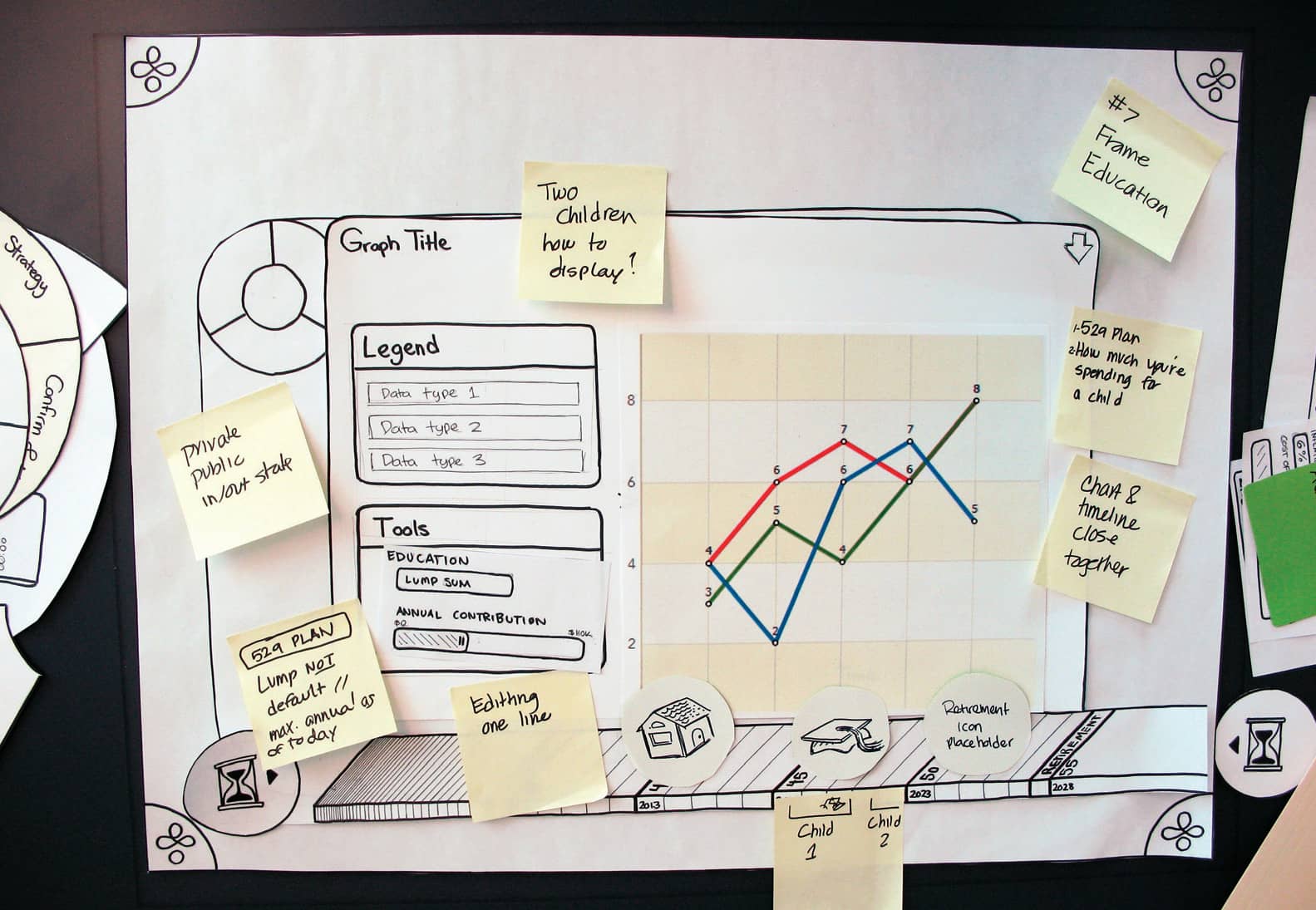SYNTHESIS / ANALYSIS TECHNIQUE • RESEARCH DELIVERABLE
66 Prototyping

Prototyping is the tangible creation of artifacts at various levels of resolution, for development and testing of ideas within design teams and with clients and users.
A prototype, much like a picture, is worth a thousand words. The physical realization of product or interface concepts is a critical feature of the design process, representing the creative translation of research and ideation into tangible form, for essential testing of concepts by the designer, design team, clients, and potential users.
Design prototypes are defined by their level of fidelity, or resolved finish. Low-fidelity prototyping is common throughout early ideation processes in all design disciplines, appearing as concept sketches, storyboards, or sketch models. These prototypes serve an internal development purpose, as a checkpoint for the designer or team. However, low-fidelity prototypes are an excellent tool for the early testing of ideas with clients and users in generative research, so that the product is seen as a concept proposed for constructive review and timely feedback for iterative changes.
A common method of low-fidelity prototyping in interface and software design is paper prototyping. Users are presented with pages representing interface screens. In completing a task or working toward a goal, the participant indicates what he or she would do on each screen page, while the researcher swaps subsequent pages to simulate the interface response. Areas of difficulty or positive reactions are documented, sometimes directly on the paper prototype with annotations or codes.
In graphic design, the “comp” serves as a low-fidelity prototype, presenting a mocked-up version of a proposed printed piece, usually for client review. In industrial design, low-fidelity prototypes may appear as sketch models intended for iterative design review, or as proof of concept models to test aspects of form and scale.
High-fidelity prototypes are more refined, often representing the appearance of the final product in look and feel, and sometimes even basic functionality. These are useful in later phase evaluation testing for feedback from clients and users, who can now provide a response based on aesthetics, form, interaction, and usability. Examples of high-fidelity industrial design prototypes include sophisticated models presented in computer-aided design (CAD) or physical form, or working models with some level of interactive functionality. In software design, high-fidelity usually implies an interactive prototype capable of providing a real user experience for feedback.
If low-and high-fidelity prototypes are end points on a continuum, it stands to reason that there are many variations of prototyping in between. For example, test rigs are frequently used to exhibit and test the functionality of machines prior to aesthetic form development. In interface design, screen renderings may be used for documentation and presentation, without any interactive functionality.
Further Reading
Various perspectives are offered on prototyping, depending in part on design discipline. See for example:
Houde, S., and C. Hill. “What Do Prototypes Prototype?” in Handbook of Human-Computer Interaction, 2nd ed. Amsterdam: Elsevier Science B. V, 1997.
Interactions. The Art of Prototyping, special section edited by Michael Arent. vol. 13, no. 1, January/February, ACM, 2006.
Lidwell, William, Kritina Holden, and Jill Butler. Universal Principles of Design: 125 Ways to Enhance Usability, Influence Perception, Increase Appeal, Make Better Design Decisions, and Teach through Design, 2nd ed. Beverly, MA: Rockport Publishers, 2010.
Warfel, Todd Zaki. Prototyping: A Practitioner’s Guide. Brooklyn, N.Y.: Rosenfeld Media, 2009.

Low-fidelity prototypes of interface behaviors are used to build consensus and understanding among project team members and clients.
Courtesy of POP

Industrial design prototypes are used for iterative form development, gauging user response, and communication of design concepts.
Courtesy of Lilian Kong
